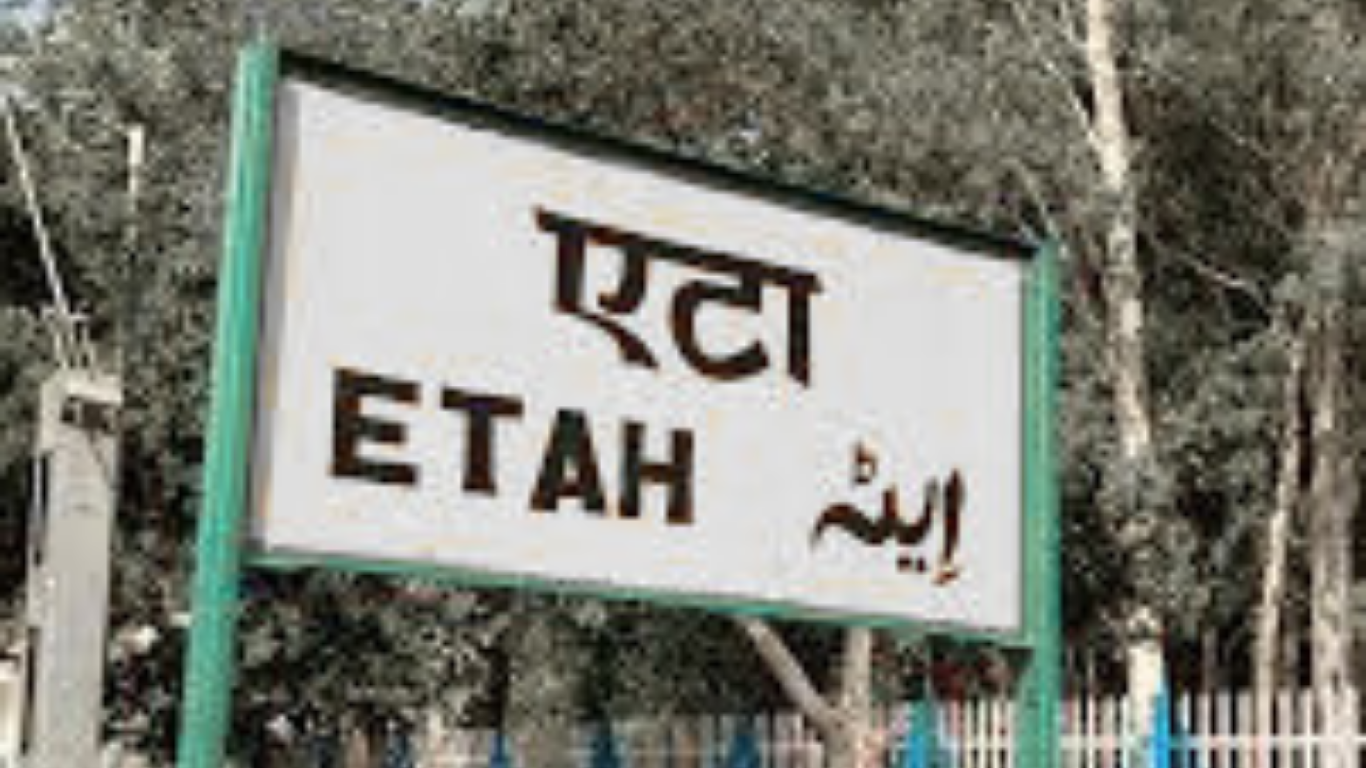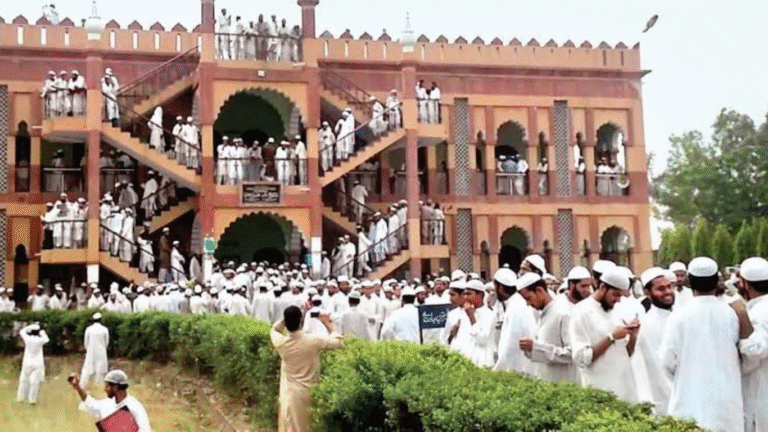
Etah is a district and city located in western Uttar Pradesh, known for its deep-rooted culture, religious landmarks, and steadily growing economy. Positioned between Agra and Bareilly, Etah holds a unique space in the heart of the Braj region, where the stories of Lord Krishna still echo through generations.
It may not be as well-known nationally as cities like Lucknow or Varanasi, but Etah has its charm—shaped by its agricultural fields, historical temples, rustic simplicity, and a population that’s grounded in tradition yet slowly embracing modernity. The city of Etah serves as the district headquarters and acts as the commercial and administrative center for surrounding rural areas.
The roads of Etah are dotted with shops, old havelis, and temples that tell stories of the past. With a blend of tradition and development, Etah is transforming at its own pace, backed by its people and potential.
History of Etah – The Legacy Carved in Soil and Scriptures
Etah’s history is as layered as the soil of its fields. The region traces its roots back to ancient and medieval times, playing a significant role during both the Mahabharata and Mughal periods.
It is believed that Etah was part of the Braj region, which is closely associated with Lord Krishna. The nearby towns and villages are full of folklore and traditions related to Krishna’s early life. Historical accounts also suggest that Etah was under Panchala, one of the ancient Mahajanapadas.
During the Mughal rule, Etah witnessed administrative significance, as its location allowed control over key routes between Agra and Bareilly. Many old mosques and structures still bear traces of that era.
In the freedom struggle, Etah produced several freedom fighters who participated in the 1857 revolt and later movements. The spirit of resistance and pride runs deep in its villages and towns.
Post-independence, Etah was gradually developed as a district with improved administrative facilities. However, it still retains the soul of a simple, hardworking community. Its past is not just documented in books but is still alive in the oral traditions, temples, and heritage buildings that dot the area.
Geography of Etah – A Blend of Plains and Rivers
Etah lies in the western plains of Uttar Pradesh and forms part of the Aligarh Division. The district is spread over 2,456 square kilometers and is primarily alluvial plains formed by rivers like Ganga and Kali Nadi. The fertile land is one of the key strengths of the region, supporting agriculture throughout the year.
The terrain is mostly flat, which makes it ideal for farming and infrastructure development. The soil is rich in minerals and nutrients, suitable for crops like wheat, paddy, bajra, mustard, and sugarcane. The district is divided into Etah, Jalesar, and Aliganj tehsils, each with its own unique land features and villages.
The climate in Etah is typically subtropical, with very hot summers, a monsoon season from June to September, and mild winters. While summers can touch 45°C, winters are more pleasant, making it the best time to visit.
Rivers and ponds are scattered across the region, supporting both agriculture and the local ecosystem. Although not a forest-heavy district, Etah has patches of green belts, particularly around Jalesar, known for its brassware industry and small forest reserves.
Overall, the geography of Etah supports both traditional livelihoods and future development. The region holds potential for further agricultural modernization, water conservation, and eco-tourism if properly managed.
Economy of Etah – Grounded in Fields, Growing with Change
The economy of Etah is still largely agriculture-based, with most families relying on farming as their primary source of income. The fertile lands allow two to three crop cycles a year, and the district is a major producer of wheat, paddy, maize, and mustard. Livestock farming also plays a key role, with many households maintaining cattle and poultry.
In addition to agriculture, Jalesar – a town within Etah district – is famous for its brassware and bell-making industry. Jalesar’s bells are used in temples across India, and artisans here have passed down the craft from generation to generation. This cottage industry offers both employment and cultural recognition to the region.
Small-scale industries, including brick kilns, rice mills, garment stitching units, and food processing centers, contribute to the semi-urban economy of Etah. With growing access to the internet and mobile banking, many youths are entering e-commerce, service jobs, and online education.
The government has also introduced skill training programs and subsidies to encourage self-employment and entrepreneurship among rural youth. However, challenges remain in the form of infrastructure gaps, irregular electricity, and seasonal unemployment.With proper support and better connectivity through the Delhi-Howrah railway line and National Highway 91, Etah is slowly transitioning from a rural economy to a more balanced one.
Demography of Etah – People, Culture, and Language
According to recent census data, Etah district has a population of over 1.7 million people. The majority of the population lives in rural areas, though urbanization is gradually increasing. The male-female ratio is balanced, and literacy rates are improving year by year.
The major communities in Etah include Yadavs, Jats, Brahmins, Lodhis, and Scheduled Castes. People here mostly follow Hinduism, although Muslims also form a significant minority in towns and villages. Religious harmony is generally maintained, with shared participation in fairs, festivals, and community events.
Hindi is the official language, while Brajbhasha and local dialects are commonly spoken in rural areas. People are known for their warmth, simplicity, and strong connection to tradition. Joint families are common, and social customs still carry weight in daily life.
Education has seen a steady rise in recent years. With schools, coaching centers, and degree colleges in Etah and nearby towns, more students are now pursuing higher studies in cities like Agra, Aligarh, and Delhi.
Cultural traditions such as Ramlila performances, folk songs, and village melas still thrive in the region, especially during festivals like Holi, Diwali, and Janmashtami. The people of Etah are deeply attached to their roots, even as they adapt to the changes of the modern world.
Tourist Places in Etah – Temples, Crafts, and Culture
While Etah is not a mainstream tourist destination, it has several places that attract visitors, especially those interested in religious tourism, local art, and history.
1. Kailash Mandir
A popular temple dedicated to Lord Shiva, located near the city center. It sees huge crowds during Maha Shivratri and Shravan months.
2. Jalesar Bell Industry
A visit to the workshops in Jalesar gives tourists a glimpse into the centuries-old tradition of bell-making. Watching artisans shape molten brass into temple bells is a unique experience.
3. Patna Bird Sanctuary (near Jalesar)
A lesser-known but beautiful sanctuary ideal for bird watchers. It is home to many migratory birds during the winter season.
4. Awagarh Fort
Located a short drive from Etah, this historic fort was once the seat of the Jadon Rajput rulers. With its large compound and stories of royal heritage, it makes for a great historical visit.
5. Religious Fairs and Melas
Etah hosts several local fairs like the Ganges fair in Soron (in nearby Kasganj), which attract both pilgrims and tourists. These gatherings are colorful, lively, and full of local flavor.
Though underexplored, Etah holds strong potential in rural tourism, handicraft tours, and religious circuits when developed with the right facilities.
Politics of Etah – A Region of Active Participation
Etah is part of the Etah Lok Sabha constituency, and its politics has long been shaped by caste dynamics, agrarian issues, and law-and-order concerns. Major political players include the Bharatiya Janata Party (BJP), Samajwadi Party (SP), and Bahujan Samaj Party (BSP).
The region has seen active participation in elections, with high voter turnout. Local politics often revolves around rural development, youth employment, education, and infrastructure. Law and order have improved in recent years, though isolated incidents still occur.
Developmental projects, including road widening, new bus terminals, and internet connectivity, have gained pace due to the government’s focus on tier-3 towns and rural expansion.
The youth in Etah are politically aware, with many first-time voters showing interest in education reform, job creation, and digital opportunities.
Panchayati Raj institutions play a big role in rural governance. Gram pradhans, block-level officials, and MLAs are held accountable more than ever due to increased awareness among villagers.
Final Thoughts – The Real Face of Etah
Etah may not be a bustling metropolis, but it represents the true face of rural India—resilient, rooted, and rising. Its people, fields, art, and temples come together to form a district that’s steadily carving a place for itself on the map of progress.
With better infrastructure, support for local industries, and preservation of cultural heritage, Etah has the potential to grow as a model district—one that balances tradition and modernity, faith and economy, rural strength and urban dreams.
For those who want to explore authentic Uttar Pradesh, far from city chaos and close to history, Etah is worth the visit.



